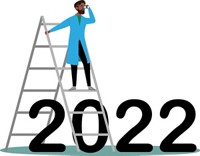Advertisement
Grab your lab coat. Let's get started
Welcome!
Welcome!
Create an account below to get 6 C&EN articles per month, receive newsletters and more - all free.
It seems this is your first time logging in online. Please enter the following information to continue.
As an ACS member you automatically get access to this site. All we need is few more details to create your reading experience.
Not you? Sign in with a different account.
Not you? Sign in with a different account.
ERROR 1
ERROR 1
ERROR 2
ERROR 2
ERROR 2
ERROR 2
ERROR 2
Password and Confirm password must match.
If you have an ACS member number, please enter it here so we can link this account to your membership. (optional)
ERROR 2
ACS values your privacy. By submitting your information, you are gaining access to C&EN and subscribing to our weekly newsletter. We use the information you provide to make your reading experience better, and we will never sell your data to third party members.
Employment
Bench & Cubicle
What’s in store for the 2021 US chemistry job market? Chemjobber offers his predictions
Hopeful vaccine news may get us on solid footing again in both academia and industry
by Chemjobber, special to C&EN
December 18, 2020
| A version of this story appeared in
Volume 98, Issue 48

The leaves have fallen from the maple tree in my front yard, and as I get ready to say goodbye and good riddance to 2020, I’m reminded that it’s time for my year-end predictions for the 2021 US chemistry job market.
It’s been quite a year. When the pandemic hit the US this spring, I expected to see an impact on academic hiring, and I was correct. According to the Chemistry Faculty Jobs List compiled by Andrew Spaeth and me, the 2019–20 academic cycle ended with 557 tenure-track professor positions available, down slightly from 592 positions in the 2018–19 cycle. But the 2020–21 academic hiring cycle is looking grim so far, with the current count of available positions (210 to date) down 60% from where we would normally be in the cycle. Teaching assistant professor positions (currently at 19) are down by 50%.
While the drop in the rate of hiring from last season has been significant, the kinds of colleges and universities that are hiring haven’t changed much—50% of positions are with PhD-granting universities, and 80% of positions are for assistant professors as opposed to more senior positions.
If trends continue, we would complete the 2020–21 academic hiring cycle with around half the positions that we’d normally expect. But predictions are only that, and things could get better. I know of a few universities that traditionally place ads for assistant professors in September that waited until December to place their ads, so those will get added to the final count. And with the deployment of vaccines and the return of in-person classes at some academic institutions, I predict that university administrations will be more willing to conduct searches, making the 2021–22 hiring cycle stronger than the previous year.
For the pharmaceutical sector, 2020 has been a good year financially and one that hasn’t seen mass layoffs or major reports of lowered revenues and profits. That’s great news, and it’s also good news that hiring has kept pace. The number of postings for industrial organic chemistry jobs on CommonOrganicChemistry.com has remained steady between 2019 and 2020. And the proprietor of that website tells me that there has been a lack of layoffs, and hiring levels have not changed. This pattern, although anecdotal, suggests that the sector as a whole remains healthy. If synthetic chemistry is holding strong in the pharma sector, that indicates that hiring in other fields important to pharma (such as analytical chemistry and biochemistry) remains strong as well. It’s hard to imagine reasons that this outlook will change in 2021, and it is heartening to have hope for the pharmaceutical sector after the difficult years following the Great Recession and after this tumultuous year.
By contrast, the nonpharma sectors of the chemical industry have felt an impact to their bottom lines, as the pandemic has dramatically changed consumer habits. People around the world started working remotely, which reduced gas consumption, affecting the oil and gas industries. People were less likely to buy a new car or travel by air, lowering demand for chemicals for automobiles and the aerospace industry. We don’t have a solid baseline to understand the hiring of chemists in the nonpharma sectors, but we know that Dow announced a 6% cut to payrolls in July. While we all might covet an N95 mask from 3M and might be willing to pay top dollar for it, that hasn’t changed the company’s business outlook sufficiently to avoid layoffs—3M announced a 3% cut to payrolls in early December. I hope the industrial chemical sector will turn around as the economy rebounds, but I expect it to take at least a full year to see layoffs stop and hiring recover.
The COVID-19 pandemic and the economy are inextricably linked. Our required isolation stops some of us from participating fully in the economy. When was the last time you had a drink at a pub with friends or went to a movie with your family? Until the pandemic subsides, we won’t be back to normal, and neither will the economy. Same goes for the chemical enterprise.
The sooner we all are vaccinated, the sooner we can fully participate in society, and the sooner the broad economy will recover its pre-2020 upward employment trends. This was a hard year, and months of cautious isolation are still ahead of us in 2021. But I am hopeful that we will prevail and that chemical employment will too.
Chemjobber is an industrial chemist who blogs about the chemistry job market at chemjobber.blogspot.com. Find all his columns for C&EN and suggest future topics at cenm.ag/benchandcubicle.
Views expressed are those of the author and not necessarily those of C&EN or ACS.





Join the conversation
Contact the reporter
Submit a Letter to the Editor for publication
Engage with us on Twitter